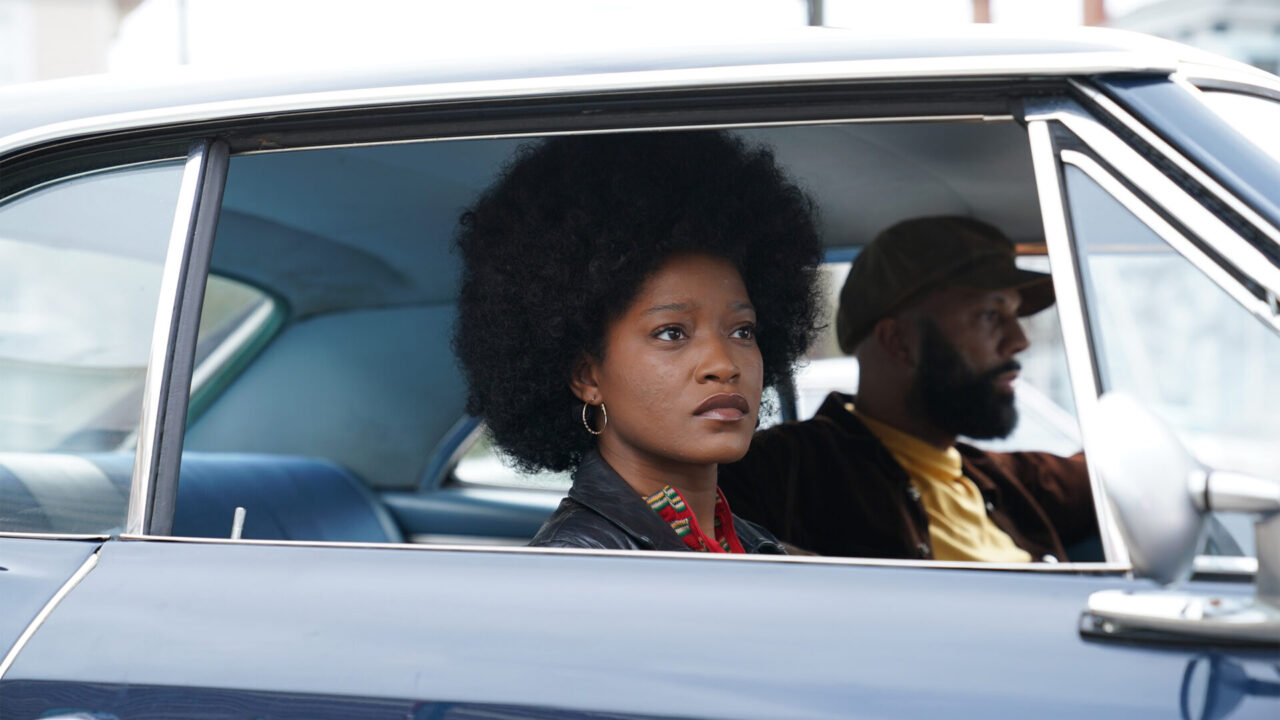Our review of ‘Alice’ was first published as part of our Sundance Film Festival 2022 coverage.
Where to watch: Now playing in theaters.
Alice opens with a shot of a woman running desperately through a field. More specifically, she’s a Black woman in a plantation dress, so we have an idea as to why she’s likely in fear. She runs until she stops. And then, she lets out a blood-curdling scream. A curiously anachronistic title card covers the screen: “Alice,” in a very 70s style font.
This intro and title card reveal is stylistically cool, but also a bit clunky. So is most of first-time feature filmmaker Krystin Ver Linden’s directorial debut, Alice, in which a runaway slave escapes her plantation, only to find herself in a different reality.
It’s a hell of a premise (actually, I learned that it’s also very similar to the 2020 horror film Antebellum, which I’ve yet to see). Alice is one of those films with a really interesting concept but not a great execution. For this reason, I think some people will really dig it for its inventive and fresh storytelling but if you’re like me, you won’t be able to escape the problems with its awkwardly mashed-up tone and narrative incomprehension.
Back to that opening: it’s actually a very exciting start, and really pretty gripping. When that groovy title card splashes across the screen, you think it’s immediately about to swerve into fun. But it doesn’t. Alice then slogs through a multitude of scenes of plantation life, which move painfully and slowly forward. Any sense of urgency is lost, and we even lose Alice (Keke Palmer) for a good while, too.
Although it’s pretty beautifully shot, with very fine period piece production (including its location, costume, and cinematography), the story doesn’t launch us forward in an exciting way. For one, we get way too much screentime from Jonny Lee Miller as Paul Bennet, the plantation owner. There are exciting early moments like a different (unsuccessful) runaway attempt. But it’s so awkwardly choreographed and without Alice being involved herself, it’s confusing to wonder where this movie is really headed.
It’s almost halfway into the film when Alice finally asserts herself (running away from that intro’s plantation) and the movie makes its reveal. It’s not exactly a spoiler to give away what happens next (think M. Night Shyamalan’s The Village). In fact, I think people’s interest in this movie will be roused by knowing that once Alice runs away and gets to the side of the road, she’s almost hit by a car zooming down the highway. It’s not the Antebellum south, but somehow, 1973.

She’s picked up by truck-driving Frank (Common), who gives her a ride into town. He apparently doesn’t find it odd that not only is she struggling to comprehend everything around her in wide-eyed panic, but she’s also covered in blood (there’s a struggle she’s involved with before she gets here). Frank takes Alice to the hospital, but when he sees that she might be admitted to the psychiatric ward, he decides to let her stay with him to look after her.
You might be able to guess what happens next: Alice slowly comes to grips with what time of year it is, a time in which slavery has been abolished (although, she is smack dab in the Civil Rights act). Again: an interesting idea, but the writing doesn’t totally work here. Rather than panicking that she’s somehow transported a century into the future (or has she?), she’s left with lines like asking Frank, “Are you free?,” and to his fellow farmworkers, “Are these your domestics?” Keke Palmer gives everything she has to this performance but the awkward writing and story choices force her to do some pretty eye-rolling acting.

Now able to read books in Frank’s apartment, she phonetically sounds out words like “slavery” and “Emancipation Proclamation”–which would have been more powerful if silently conveyed. It’s this sort of deliberateness throughout Alice that makes the film a little too heavy-handed.
If you’re able to get past the awkward writing, then you’ll likely appreciate all of the fun that is to (eventually) come. Alice’s education and consumption of Black culture are captured through different pop culture media: in magazines like Ebony and Rolling Stone, Stevie Wonder and Nina Simone, and on TV like Sanford & Son and Black Panther news. And then, all roads lead to Alice’s most transformative moment: going to the movies to see Pam Grier’s iconic classic “Coffy,” the singular moment that then shifts the movie from slavery film, to time travel movie, to wild Blaxploitation ending (think Django Unchained meets Back to the Future).
While there are some problems with the story, it’s undeniable that Alice is still a fresh new story and interesting vision from a first-time filmmaker, whose idea and concepts should be celebrated.
100 min.
Ryan Rojas
Ryan is the editorial manager of Cinemacy, which he co-runs with his older sister, Morgan. Ryan is a member of the Hollywood Critics Association. Ryan's favorite films include 2001: A Space Odyssey, The Social Network, and The Master.

